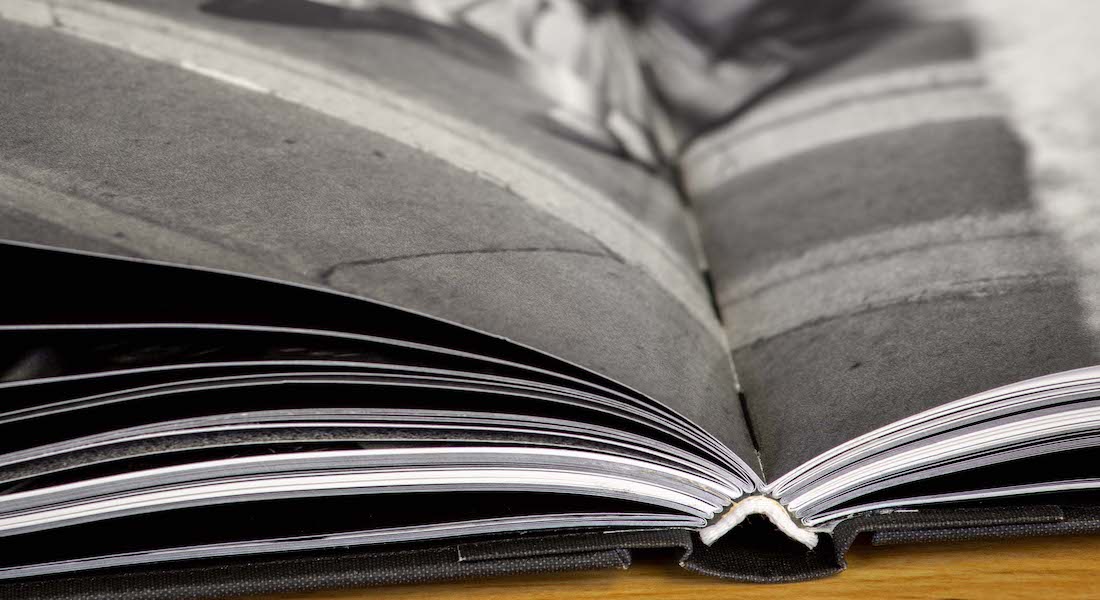When it comes to binding styles there are numerous options for your next book but what do they each mean? One of the more complex bindery methods- Smyth Sewing- is often considered as the premier choice, noted as ‘library quality’ due to its enhanced durability and lay-flat properties.
How Does Smyth Sewing Work?
The concept of machine sewn books dates back to 1871 when David McConnel Smyth obtained his first patent; however, in 1882 the Smyth Manufacturing Company in Hartford, Connecticut began production of the first sewing machines- changing bookbinding technology forever. The process to bind smyth sewn books begins with ‘signatures’, these signatures are large sheets of printed paper which are then folded into groups of anywhere from 8 to 32 pages. Signatures are then individually stitched together using a cotton covered nylon thread, with each folded signature sewn to the next by multiple needle and thread stitches down the length of the signature. These sewn signatures create a complete book block which is then glued into a paper cover or a hardcover case. Due to the high levels of automation in processes, machinery senses if a signature is missed or if a thread or needle is broken- leaving very little room for error and ensuring a high quality result.
Benefits of Smyth Sewing
Smyth sewing has numerous benefits compared to other binding styles, with the most commonly cited being its durability. Because the pages are stitched together they are able to withstand years of wear and tear, unlike adhesive bound books where glue may begin to deteriorate after repeated use. Another important benefit of smyth sewing is the flexibility and strength of the bind. Smyth sewn books lay flat when opened, making them perfect for cookbooks, sketchbooks and notebooks; additionally, this binding style is designed to display the entire page when opened, ideal for music, art, and architectural books.
While many may think of Smyth Sewing as an expensive option it can actually assist in reducing certain costs associated with materials and labor. Digitally printed sheets can be turned into signatures and then into Smyth sewn book blocks at high speed, made possible by Superior’s Universe Sewing Machine. This machine will feed single sheets, score, fold, nest, gather and then stitch, eliminating multiple steps. While predominantly used on short runs, Smyth sewn digital print jobs generate several hidden benefits. Because grain direction is less critical with Smyth sewn books, sometimes it is possible to get a better imposition with cross-grain paper- reducing the cost of a job compared to adhesive binding. Lastly, because books finish Smyth sewing as separated units, Superior does not require slip sheets or hand sorting of loose sheets.
Incorporate Smyth Sewing On Your Next Project
Superior Packaging and Finishing has operated in the bindery space for over 30 years, developing and executing projects for thousands of organizations, publishers, and authors. Our state of the art, master Smyth Sewing technologies from Meccanotecnica increase productivity while ensuring the highest degree of quality and craftsmanship. Superior’s advanced equipment and high levels of automation make Smyth sewing surprisingly affordable, be sure to talk to a Superior Bindery specialist and consider Smyth sewing for your next book project!

